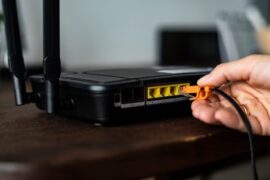Ensure your firewall is configured with strict user permission control to prevent authorized administrators from changing configurations. Encryption protocols are also vital for safeguarding data from unauthorized interception. Limiting physical access to networking hardware will prevent unauthorized data theft and protect against man-in-the-middle attacks. It is also essential for limiting the spread of viruses.
Create a Detailed Firewall Log
Creating a detailed firewall log gives your team insights into how the firewall deals with specific traffic types. Firewall logs provide information like source and destination IP addresses, protocols, and ports used to connect. Ideally, you should enable logging on all permit/deny rules, as it gives your team an extra layer of security that prevents misconfigurations and security breaches. The logging feature also documents any changes that are made to firewall configurations. This way, any unwarranted changes can be easily spotted, and configured restoration can be executed. IT teams should always use user permission control to ensure only authorized administrators can change the firewall configurations.
Moreover, when an administrator changes a firewall configuration, the action should be documented for audits and compliance purposes. To optimize your NGFW best practices further, consider deploying a SIEM platform that helps analysts detect threats more quickly by correlating firewall activity with other security systems in real time. In addition, develop and regularly practice an incident response plan that includes procedures for handling potential threats against the firewall. Lastly, consider using security orchestration, automation, and response (SOAR) tools to create automated incident response playbooks with additional protections when threats are detected. This can save you valuable time and resources and improve your security posture.
Create a Comprehensive SIEM Platform
As part of a comprehensive security program, deploying an effective SIEM tool can help organizations detect threats proactively and meet compliance standards. A centralized platform with automated event correlation can also help reduce the time and costs of manually reviewing threat alerts and events. Before deploying an SIEM solution, determine your goals and establish specific security use cases. Identifying and prioritizing log data sources is essential to ensure that your SIEM tool can collect the necessary information to support your desired security and operational functions. Testing and reviewing your SIEM system configuration and rules during deployment is crucial to ensure they are correctly configured and effectively detecting and reporting cyber threats. Establishing and implementing security policies and response workflows and training your team to handle alerts and incidents is also necessary. As a crucial part of your network security strategy, consider implementing signal range limitations to prevent attackers from accessing the organization’s core network and critical systems. To do this, ensure all devices on your network utilize robust encryption protocols. This will ensure that even if a malicious signal does make its way to your network, it won’t be readable or usable. You should also conduct testing before implementing signal range limitations to your entire network to evaluate the impact on performance and user experience.
Implement Permit/Deny Rules
When users connect to the internet, they send and receive tiny bits of data broken into packets. Firewalls monitor these packets to see if they match predetermined security rules and decide whether to allow or block them from entering the organization’s network. Firewalls use access control lists (ACLs) to filter traffic in and out of a network device based on the source and destination address, protocol, and port number. ACLs are typically found on network gateways that protect a network from outside threats and in routers connecting different internal networks. Limiting user privileges is a vital part of a cybersecurity strategy. It ensures that attackers cannot gain unrestricted access to critical systems. Network segmentation, which creates isolated parts of a network with distinct security and access levels, can make it easier to implement policies that adhere to the principle of least privilege. In addition to ensuring that access to network resources is limited, organizations should consider using an intrusion detection system (IDPS) and an SIEM platform combined with firewalls. This allows for better visibility into network activity and provides more context when analyzing firewall performance. Additionally, it can help ensure that new rules are implemented correctly and effectively.
Limit Remote Access
A network firewall is a critical barrier that monitors and controls incoming and outgoing data based on predetermined security rules. This ensures that only authorized users can access sensitive information, thus reducing the risk of unauthorized data breaches. Firewalls can also detect and block malicious attacks such as spam, malware, botnets, phishing, data leakage, and more. A network firewall is a crucial security measure that regulates the flow of incoming and outgoing data based on predefined rules. This helps to ensure that only authorized users can access sensitive information, thereby minimizing the risk of unauthorized data breaches. Firewalls can also detect and block malicious attacks such as spam, malware, botnets, phishing, data leakage, and more. Whether they work from home or in the office, remote access for employees and vendors should be limited to what is necessary to perform their tasks. Providing access only to the services and data they need can help minimize the potential impact of cyber-attacks, such as those that have targeted industrial control systems (ICS) in recent years. Many ICS attacks have been successful by exploiting vulnerabilities at remote access points. This includes wireless networks and modems that connect to a network, which have been the target of numerous attack strategies. To prevent these threats, protect all access nodes — even the little ones like modular network plugs in conference rooms into which portable computers can be plugged. It would help if you also were specific in the rules used to define network access. Be sure to specify the source address in the rule anywhere you can. This helps limit the possibility of Man-in-the-Middle attacks, where an unauthorized individual intercepts and manipulates communication between sender and receiver.




